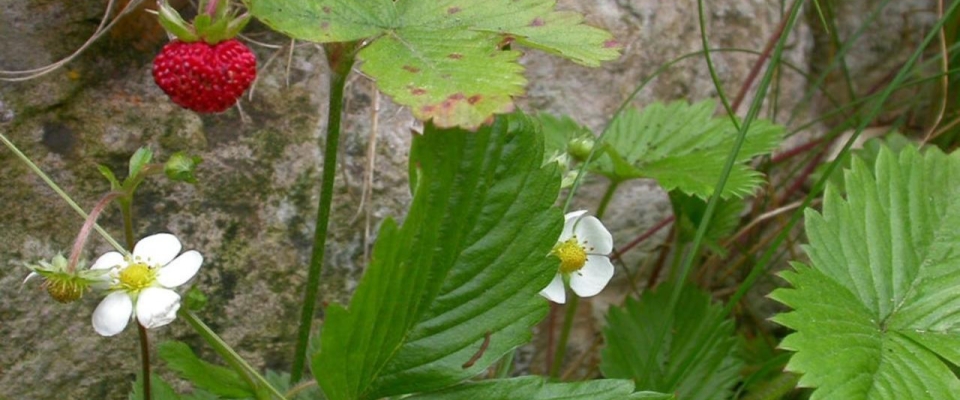

Delicious Wild Strawberries
The wild strawberry is a delicious, sweet berry much smaller than its commercial counterpart, but in my opinion, it is far superior in flavour. You can find them on grassy banks, open woods and hearths throughout Europe.
It is a low creeping plant with hairy runners and stems, and the plant has a little flower that is a snowdrop white in colour with five petals and a yellow button centre. The fruit is a small red berry, with little yellow protruding seeds.
The berry can be picked from late June to September, but you will need to look carefully for them because they are masters at hiding in long grass and under leaves; but if you persist in the hunt, you will get a sweet, tasty treat of deliciousness for a reward when you find them.
Who can resist a Strawberry? Not me, but have you ever had wild Strawberries? They are super sweet and delicious. To get the very best from them, they are best when eaten fresh from the bush (after washing, of course). The berries are also great in a salad or in a glass of champagne. The wild berries are small, so gathering any substantial harvest for recipes such as jam is unlikely, but some people do manage it.
We have wild Strawberries growing in our garden and let me tell you that some years I never see a single berry, yet I see little fingers stained red and I wonder why? :). But seriously, the little red berry is a ball of bursting juicy sweetness, and it is easy to see why Super Markets stock the larger commercial varieties. (Mass distribution and profit) but at the expense of flavour, which is a shame.
Used in folk medicine as a laxative and diuretic, the berries reputed to cure gout and the leaves considered to be good for dysentery. The fruit has antioxidant properties and is suggested to heave anti-cancer and anti-blood clotting effects.
The leaf of the strawberry is packed full of vitamin C and makes a great cuppa, it can be used fresh from the plant or dried and stored in a container. The tea has a mild fruit flavour, and in my opinion tastes better than green tea. The tea can be used as a tonic for the body and helps soothes the digestive system, particularly if you suffer from diarrhoea. With the leaf containing all that vitamin C, it could help boost the immune system too.


The strawberry has been associated with the goddess Frigga, patroness of matrimony and Oden’s wife. In Norse mythology, Frigga gave strawberries as a symbol to the spirits of young children who had died in infancy, who would then ascend to heaven hidden within a strawberry.
Freyja drives a chariot pulled by cats and cries tears of gold. She is associated with beauty, fertility, love, gold, war, death, and a type of Norse shamanistic sorcery.
More articles here

















